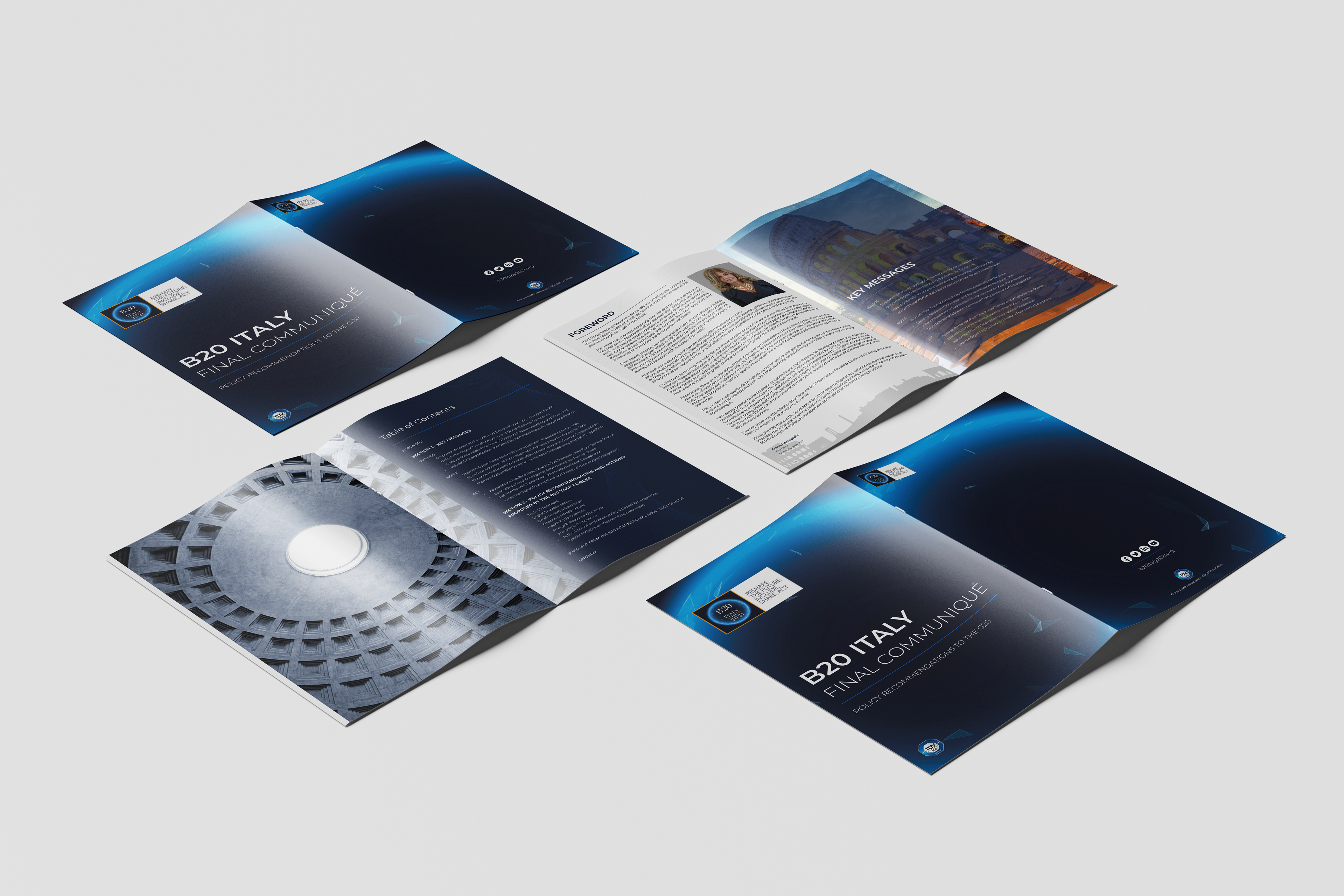

B20 ITALY FINAL COMMUNIQU
About
The Business 20 (B20) is the official G20 dialogue forum with the global business community. Established in 2010, reserved to companies and business organisations, it is among the most prominent G20 Engagement Groups. The B20 composes of an average of over 1,000 delegates from the G20 countries, including top executives from the leading multinational corporations. It accounts around 2,000 participants representing an overall business community of over 6.5 million businesses.
Ask
Ask
can help you design a catalog for the B20 Italy Final Communique. Here are some suggestions for the design of the catalog:
1. Use a clean, professional layout to give the catalog a polished and credible look.
Include the B20 and G20 logos prominently on the cover, as well as the logo of the host country, Italy.
2. Use a color scheme that is consistent with the branding of the B20 and G20.
3. Use high-quality images to showcase the event, its participants, and any relevant locations or activities.
4. Include information about the event, such as its purpose, participants, agenda, and any key outcomes or recommendations.
5. Use clear and easy-to-read typography to make the catalog accessible to a wide range of readers.
Approach
1 Gathering client requirements: The first step in creating a catalog is to understand the client's needs and requirements. This can be done through meetings, phone calls, or email correspondence.
2 Researching the market and competitors: It's essential to research the market and the client's competitors to understand the current trends and best practices in catalog design. This can help to identify what works well and what does not, and can inform the design process.
3 Sourcing product images and information: Once the design concept is established, it's necessary to source product images and information from the client. This includes high-resolution images, product descriptions, pricing information, and any other relevant details.
4 Designing the catalog layout: Using the gathered information and images, the next step is to design the layout of the catalog. This includes determining the size of the catalog, the number of pages, and the layout of each page. The layout should be visually pleasing, easy to navigate, and consistent throughout the catalog.
5 Proofreading and editing: Before finalizing the catalog, it's essential to proofread and edit the content for accuracy and consistency. This includes checking for spelling and grammar errors and ensuring that the product information and images are correct.
6 Printing or Publishing: Catalog can be either printed or published digitally. If the client want a print catalog, the final files will be sent to the printer. If client prefer digital catalogs, the catalogs can be shared through pdf or web-based format
7 Review and Revisions: Before finalizing the catalog the client should be given an opportunity to review the catalog and make revisions if necessary. The designer should make necessary changes to meet the clients satisfaction
8 Final delivery: Once the client has approved the final design, the catalog is ready to be delivered in the format required by the client, whether it's in print or digital format.
It's important to note that the catalog creation process can be done with the help of a team that includes designers, photographers, writers, and proofreaders. Communication and collaboration are key to creating a catalog that meets the client's needs and exceeds their expectations.